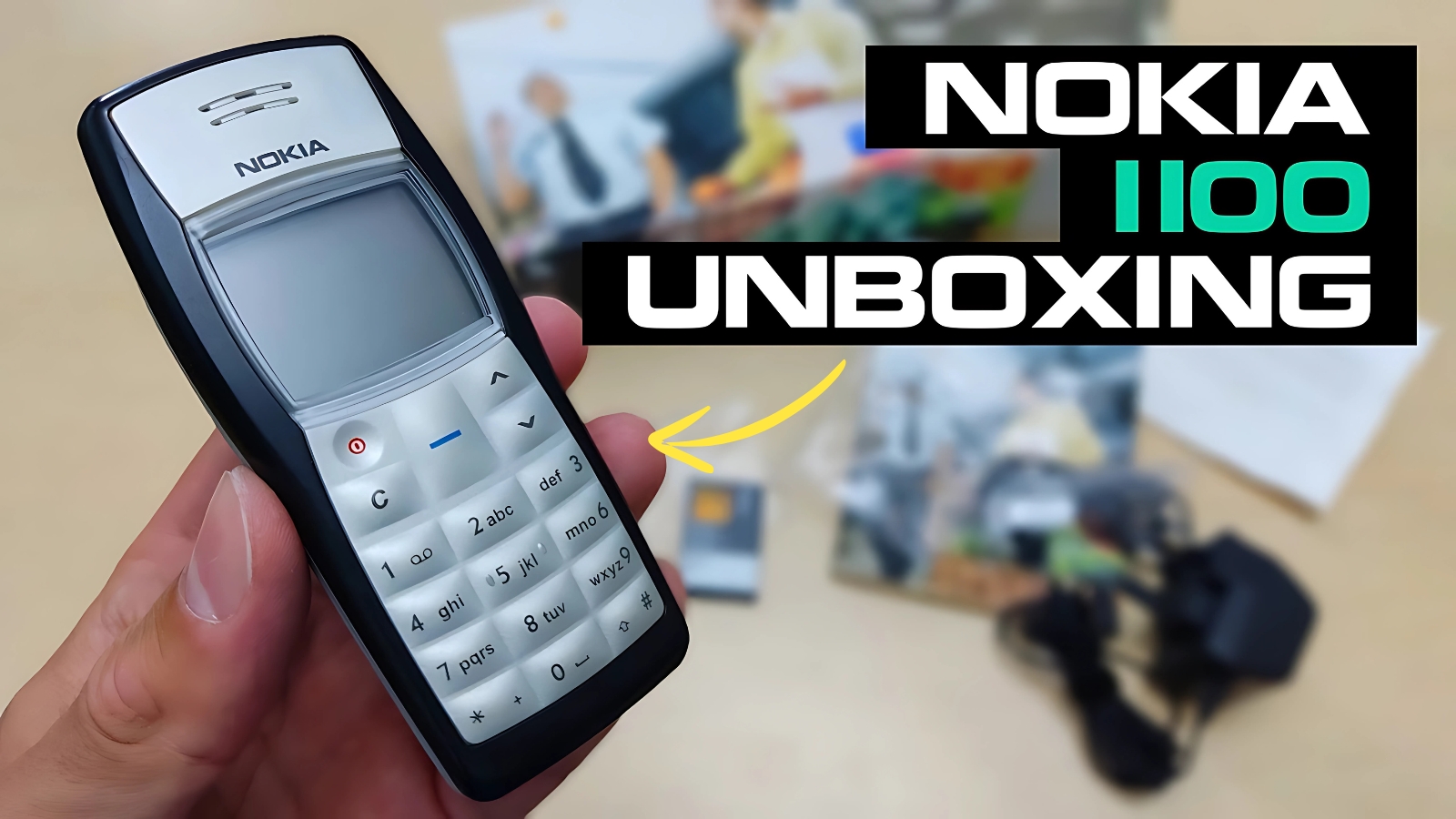Nokia 1100: In an age where smartphones become obsolete within two years, there exists a device so legendary that it continues to capture imaginations decades after its release. The Nokia 1100, launched in 2003, didn’t just become a phone – it became a cultural phenomenon that sold over 250 million units worldwide, making it one of the best-selling mobile phones in history. Today, this humble device stands as a testament to the power of simplicity and reliability in technology design.
Design Simplicity That Conquered the World
The Nokia 1100’s design philosophy centered around one fundamental principle: absolute functionality without unnecessary complexity. Measuring just 106 x 46 x 20mm and weighing a mere 86 grams, this phone felt substantial yet portable in ways that modern smartphones struggle to achieve. The monochrome LCD display, while primitive by today’s standards, provided crystal-clear visibility under virtually any lighting condition.
The physical keypad delivered tactile feedback that users could navigate confidently without looking at the device. Each button press provided satisfying resistance and audible confirmation, enabling texting in complete darkness or while multitasking. This seemingly simple feature proved revolutionary for users worldwide who could operate their phones entirely through muscle memory.
The dustproof and splash-resistant construction meant the Nokia 1100 survived environments that would destroy contemporary devices within minutes. Construction workers, farmers, outdoor enthusiasts, and people in harsh climates found a reliable communication tool that functioned regardless of conditions. The removable battery cover and easily replaceable components meant users could maintain their devices for years without professional repair services.
Available in multiple color combinations including blue, red, and the classic dark blue variant, the 1100 offered personalization options that felt meaningful rather than superficial. The color choices reflected practical considerations – darker variants hid wear better, while brighter options provided better visibility in low-light situations.

Battery Life That Redefined Mobile Independence
Perhaps no feature of the Nokia 1100 impressed users more than its extraordinary battery performance. The 850mAh removable battery delivered up to 400 hours of standby time and 4.5 hours of talk time – specifications that seem almost fictional compared to modern smartphone endurance. Users routinely charged their phones once weekly, transforming mobile communication from a daily maintenance task into a background convenience.
This exceptional battery life stemmed from intelligent power management and minimal system overhead. The phone activated only essential components during operation, maintaining network connectivity while keeping non-essential functions dormant. The monochrome display consumed minimal power, while the simple operating system required virtually no background processing.
The removable battery design enabled users to carry spare batteries for extended trips or emergency situations. Swapping batteries took seconds and required no tools or technical knowledge. This user-serviceable approach meant devices remained functional for years beyond typical phone lifecycles, contributing significantly to the model’s longevity and popularity in developing markets.
Features That Focused on Communication Essentials
The Nokia 1100 prioritized core communication functions over feature proliferation. The built-in flashlight, activated by pressing and holding the up navigation key, provided practical utility that users discovered in countless situations. This simple addition transformed the phone into a genuine emergency tool, useful during power outages, camping trips, or late-night key searches.
Text messaging capabilities, while limited to 160 characters per message, encouraged concise communication that many users found liberating compared to today’s endless messaging streams. The T9 predictive text system enabled surprisingly fast typing once users mastered the technique. Many people developed impressive texting speeds using only the numeric keypad, often faster than contemporary touchscreen users.
The address book stored up to 50 contacts with multiple phone numbers per entry, sufficient for most users’ needs while encouraging meaningful relationship management. Unlike modern smartphones that accumulate hundreds of forgotten contacts, the 1100’s limitation forced users to maintain only genuinely important connections.
OPPO F25 Pro 5G – A slim design smartphone launch with 64MP triple camera
Cultural Impact That Transcended Technology
The Nokia 1100 achieved something remarkable in technology history – it became genuinely universal. From African villages to European cities, from teenage students to elderly grandparents, this phone served users across every demographic imaginable. Its affordability made mobile communication accessible to populations previously excluded from cellular networks.
In developing markets, the 1100 often represented families’ first mobile phone, enabling communication networks that transformed communities. Small businesses used these phones to coordinate operations, farmers checked market prices, and families stayed connected across vast distances. The phone’s durability meant it often passed between family members over many years, serving multiple generations.
The device’s longevity created a thriving secondary market where used Nokia 1100s commanded respect and value years after discontinuation. Repair shops specialized in maintaining these phones, creating micro-economies around a single product. Even today, working Nokia 1100s fetch premium prices from collectors and users seeking reliable backup devices.
Nokia 1100 Legacy That Continues Inspiring Modern Design
The Nokia 1100’s influence extends far beyond its sales numbers. Modern phone manufacturers still study its design principles when developing devices for emerging markets or specialized applications. The focus on essential features, exceptional battery life, and bulletproof reliability continues inspiring products that prioritize function over form.
Security researchers and privacy advocates frequently reference the 1100 as an example of communication technology that respects user privacy through simplicity. Without internet connectivity, app ecosystems, or data collection capabilities, these phones offer communication without surveillance – a feature that seems increasingly valuable in our connected world.
The Nokia 1100 proved that successful technology doesn’t require complexity, premium materials, or cutting-edge features. Instead, it demonstrated that understanding user needs, delivering reliable performance, and maintaining affordable pricing creates products that truly change lives. In an industry obsessed with annual upgrades and feature inflation, the 1100’s legacy reminds us that sometimes, the best technology is the technology that simply works.